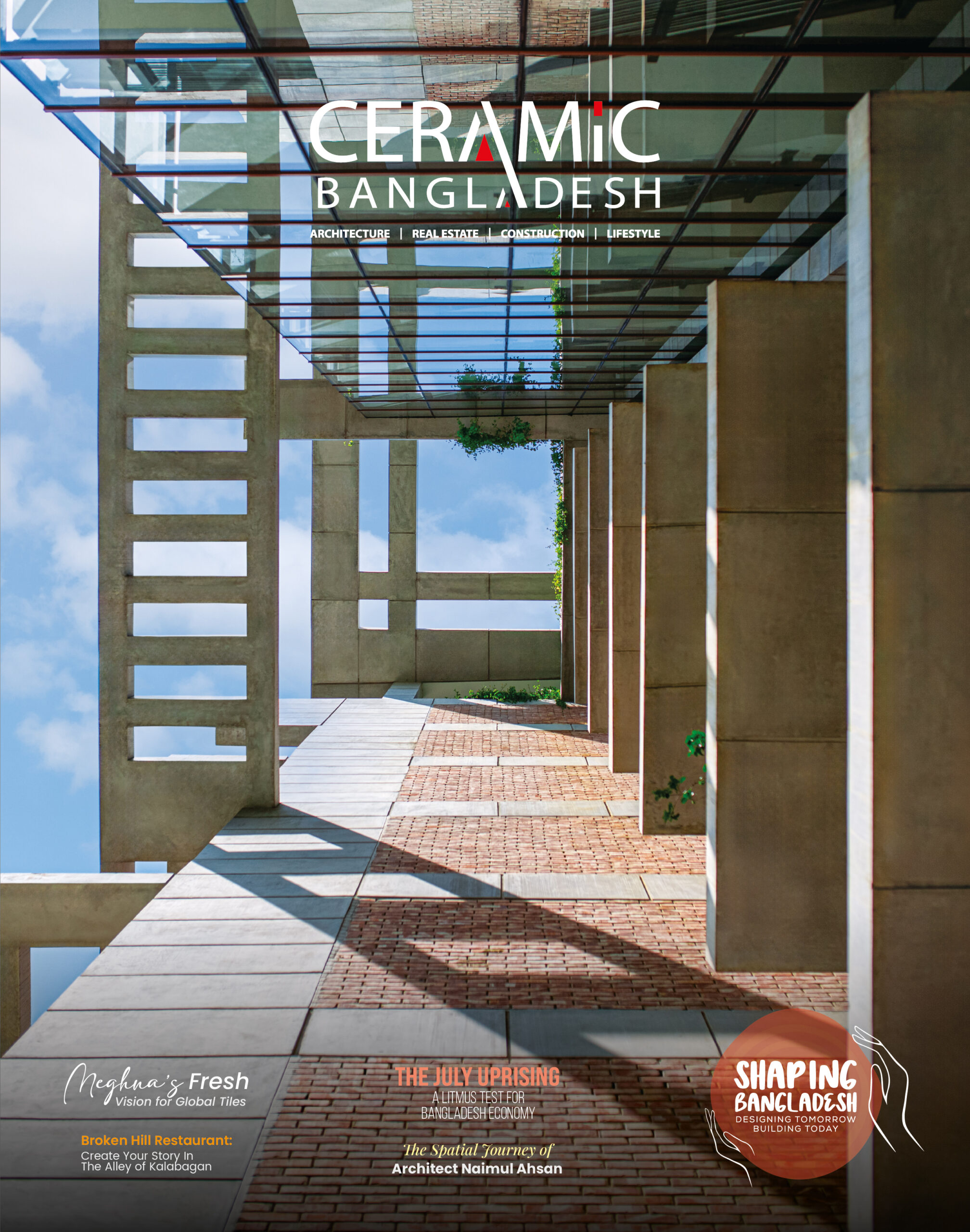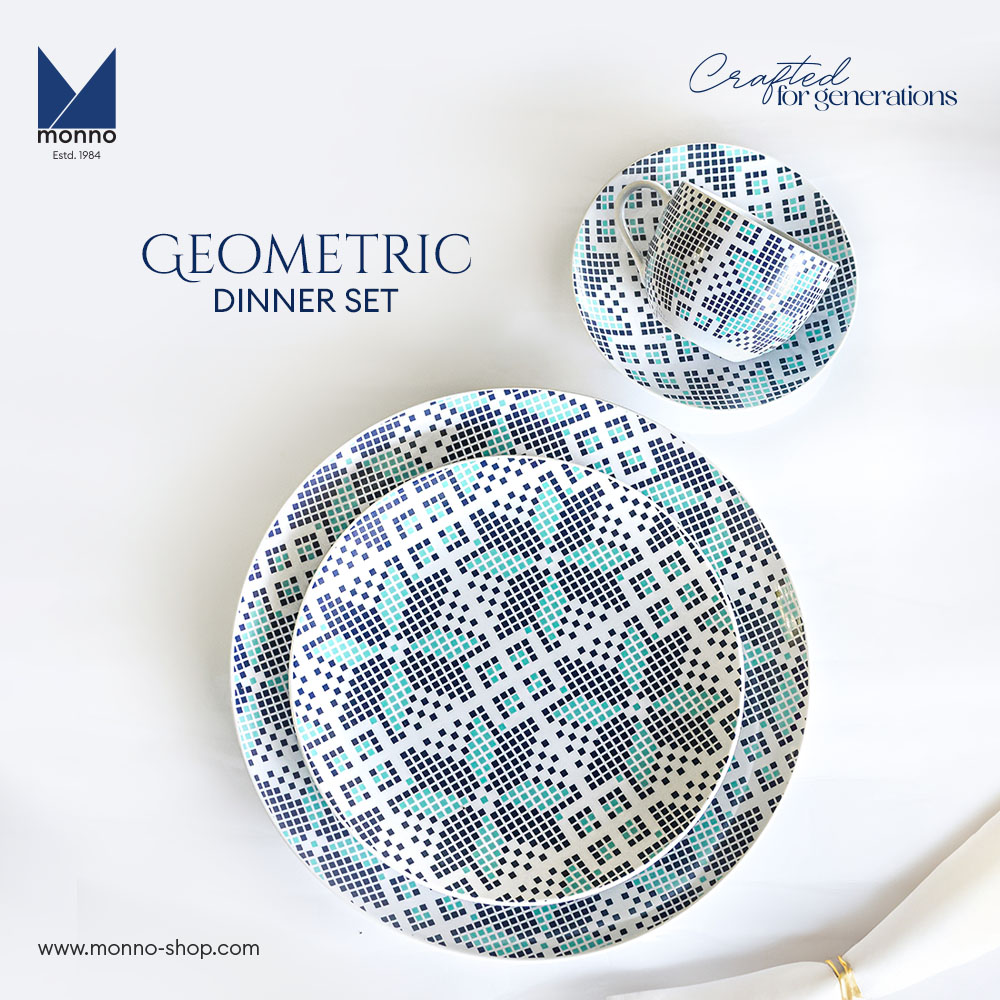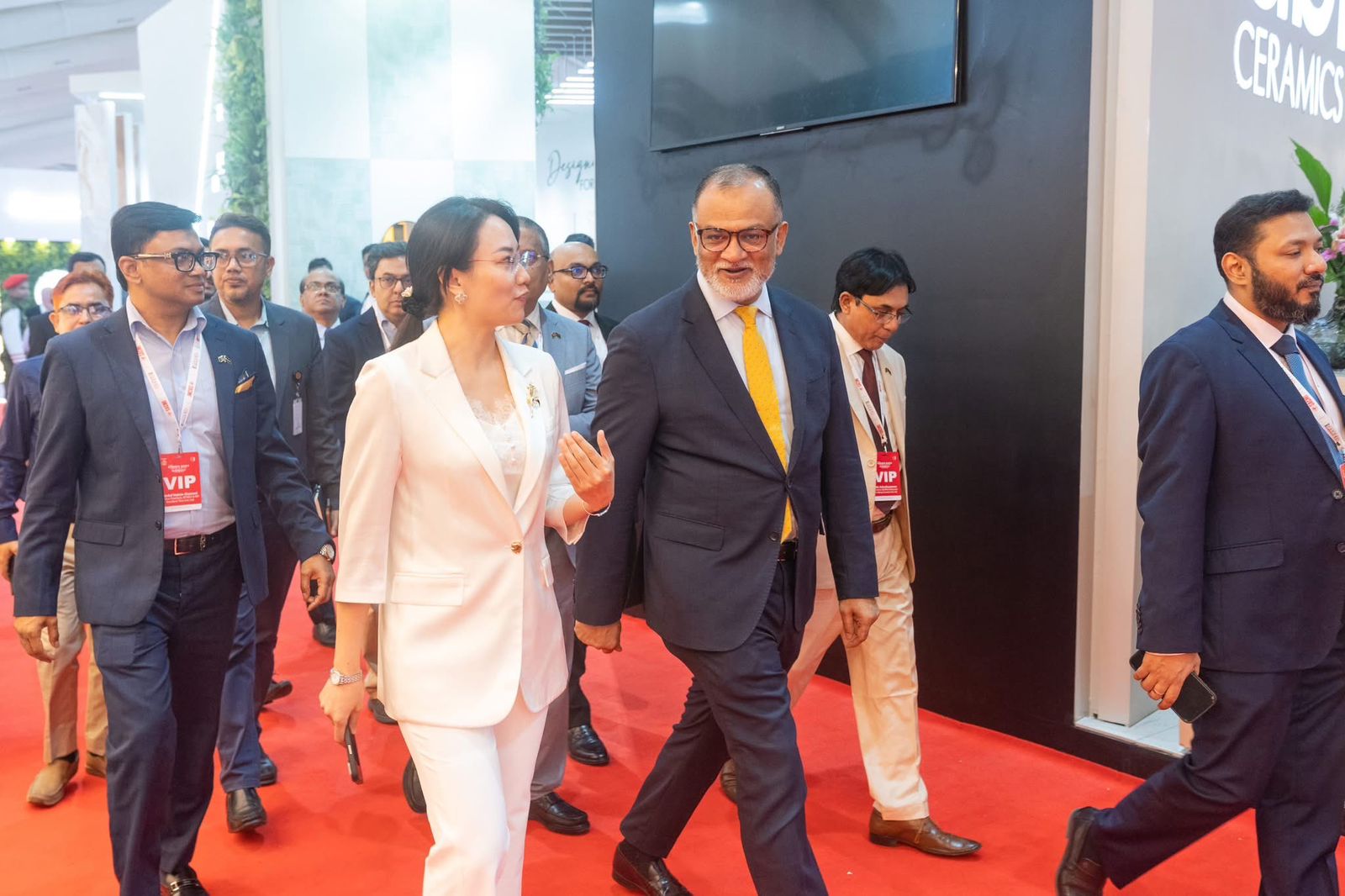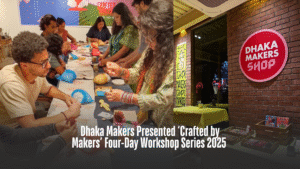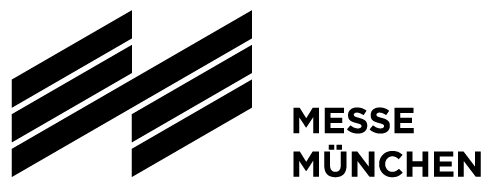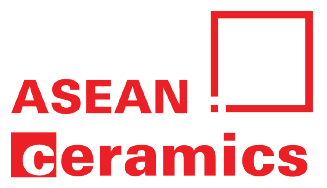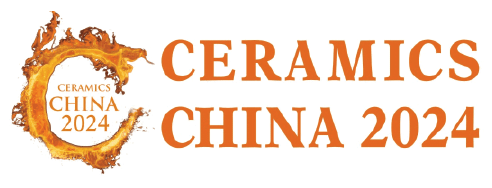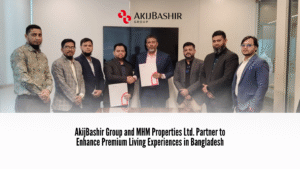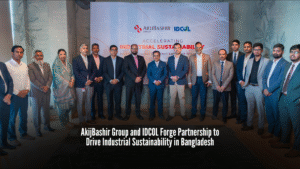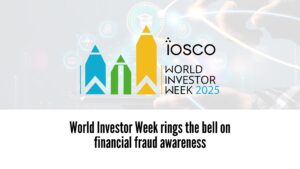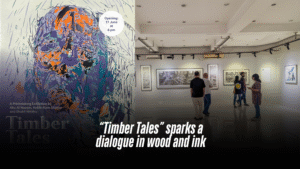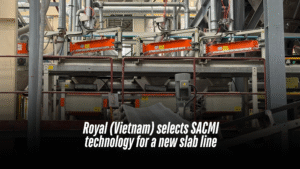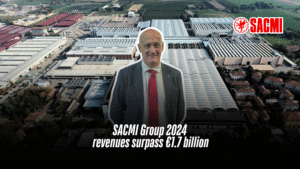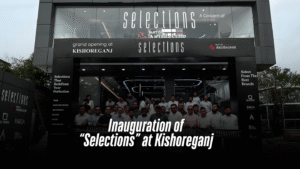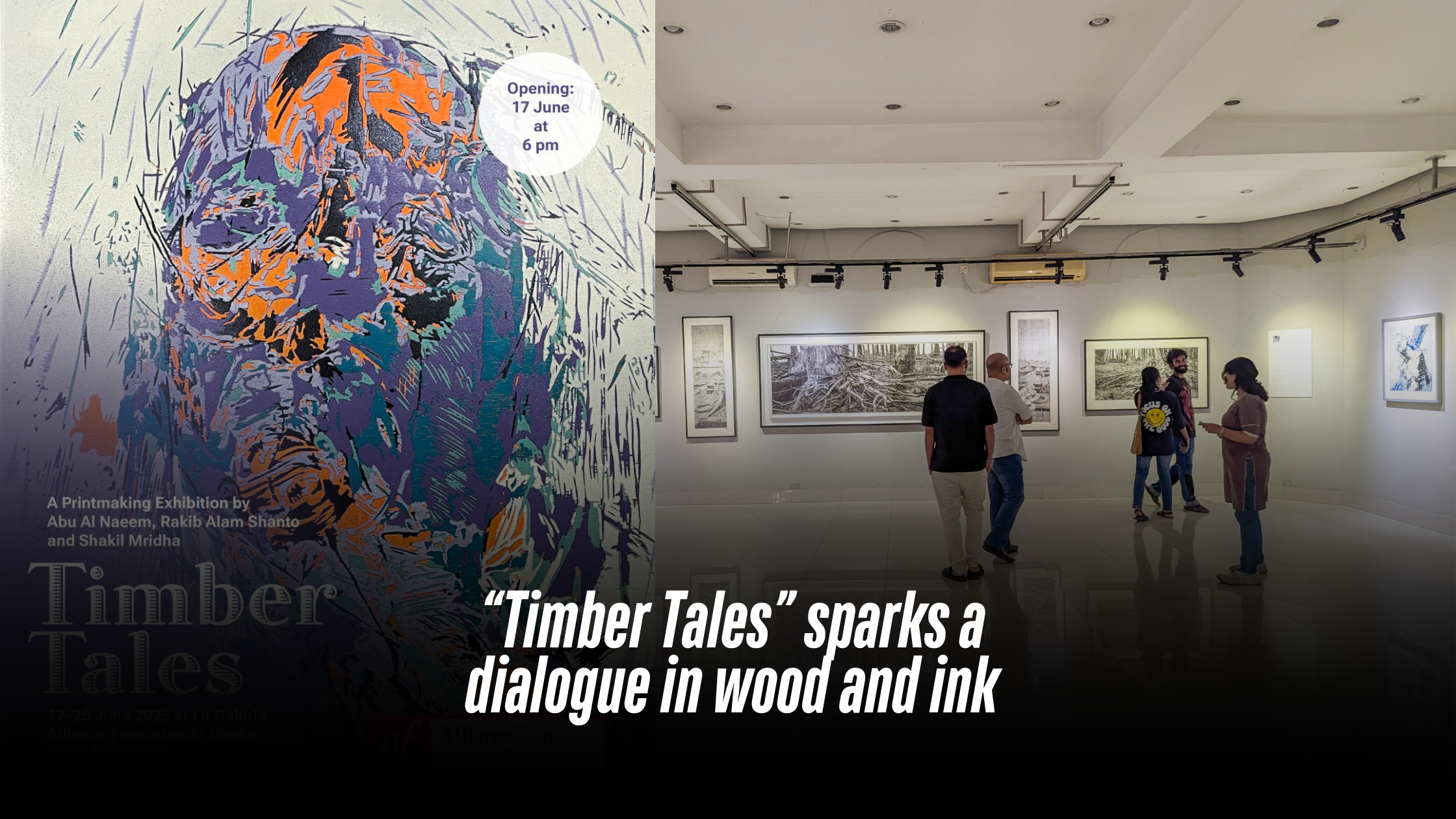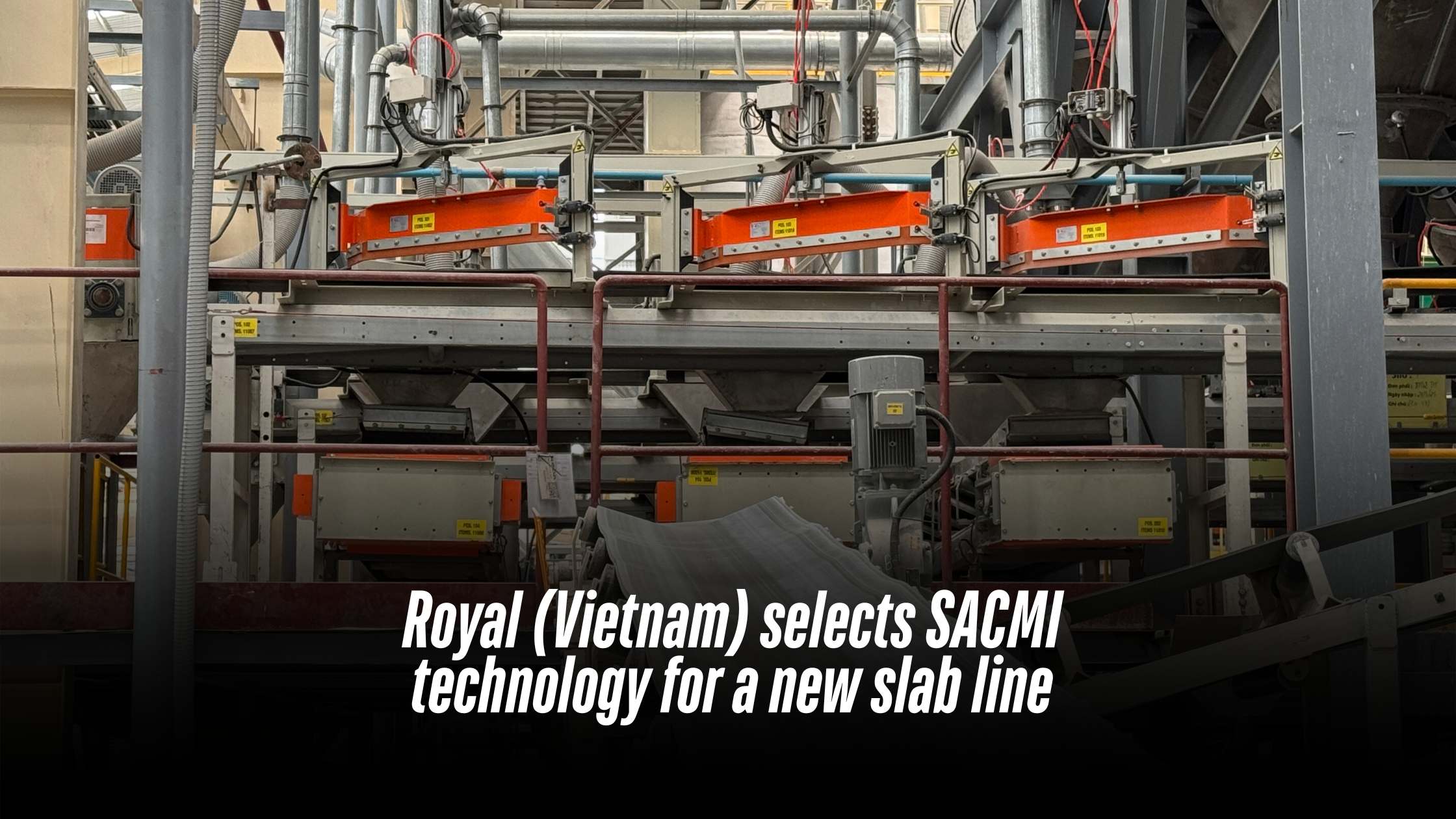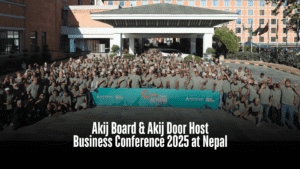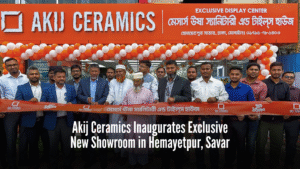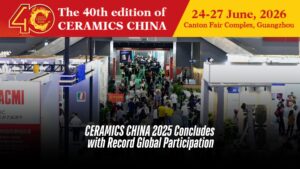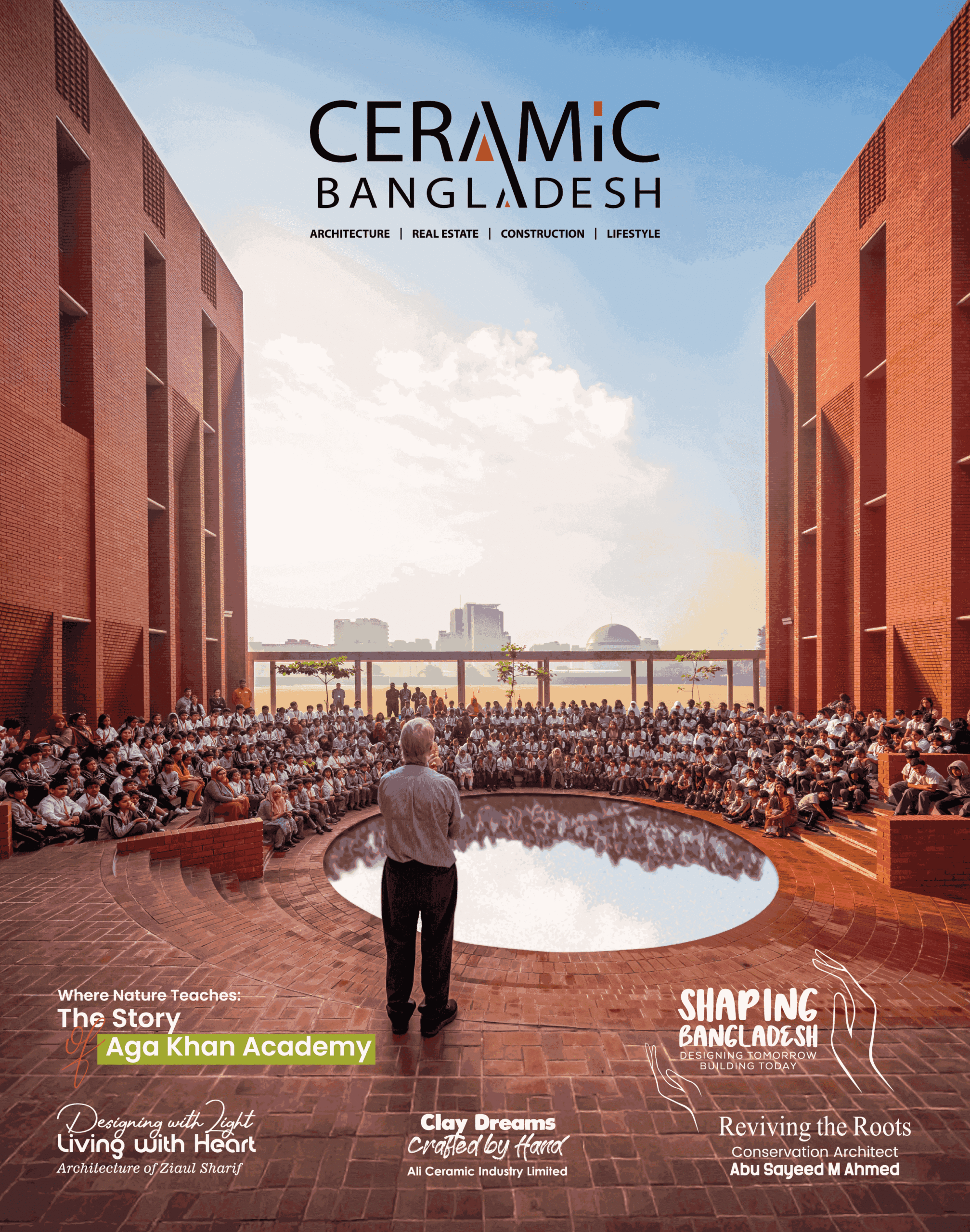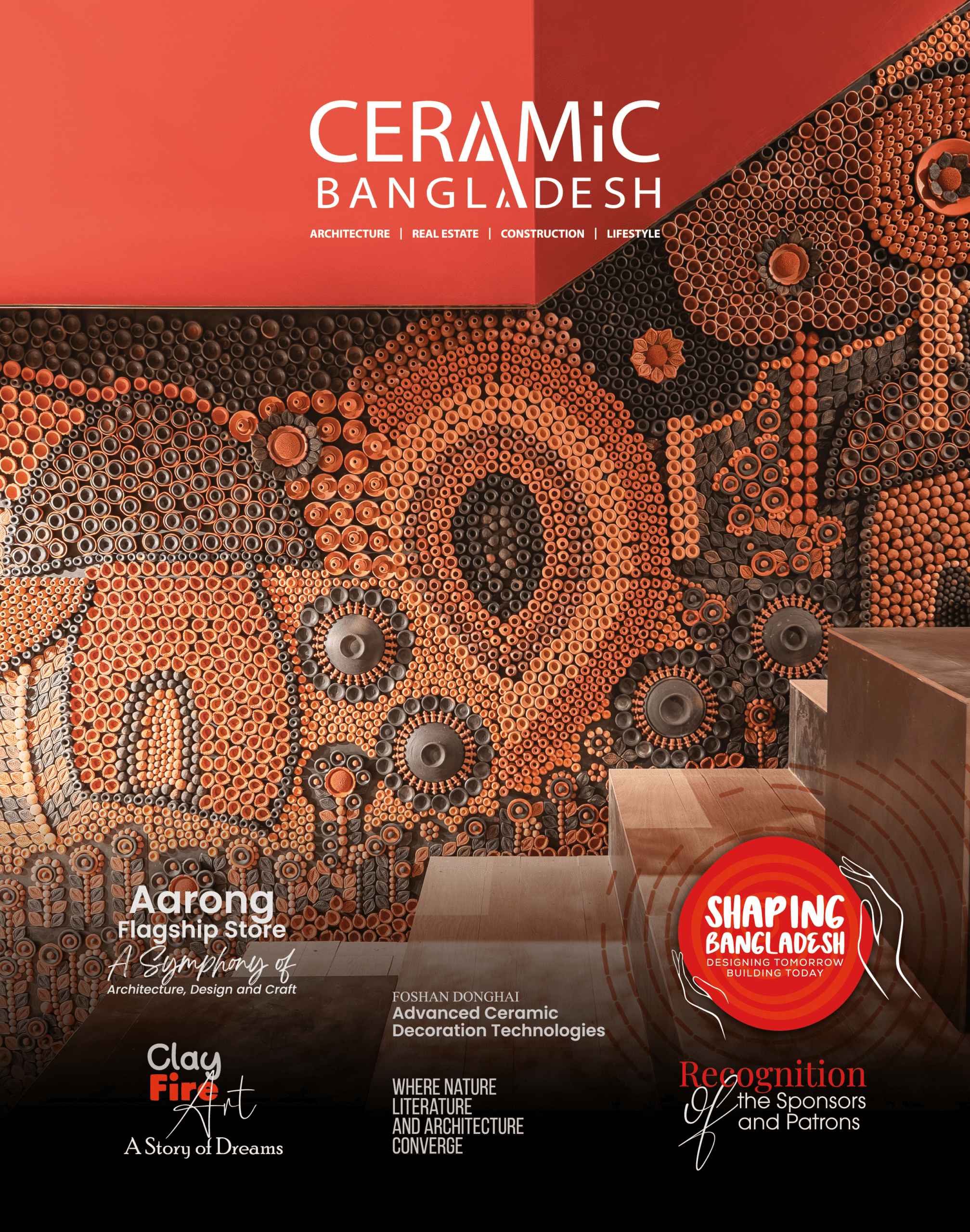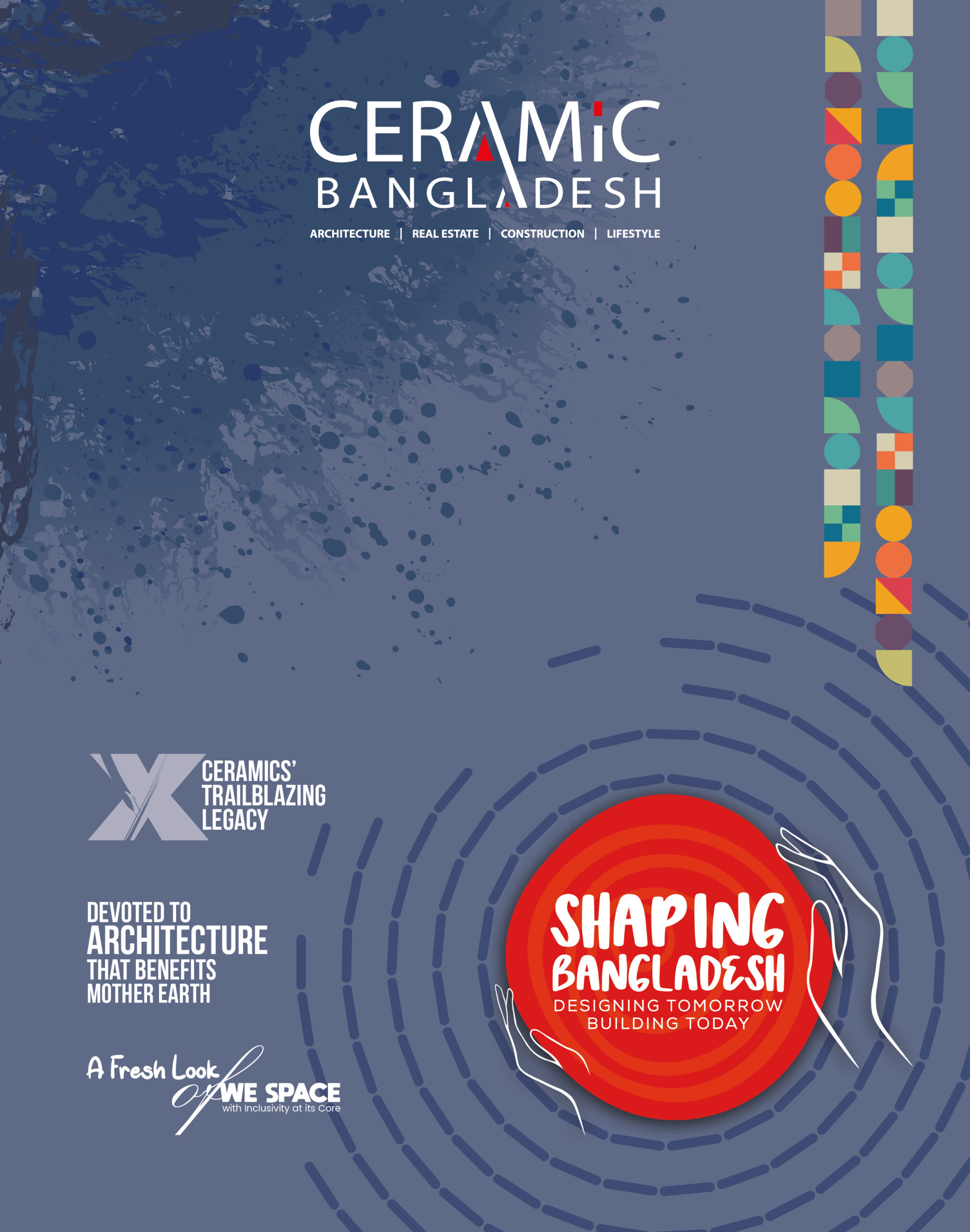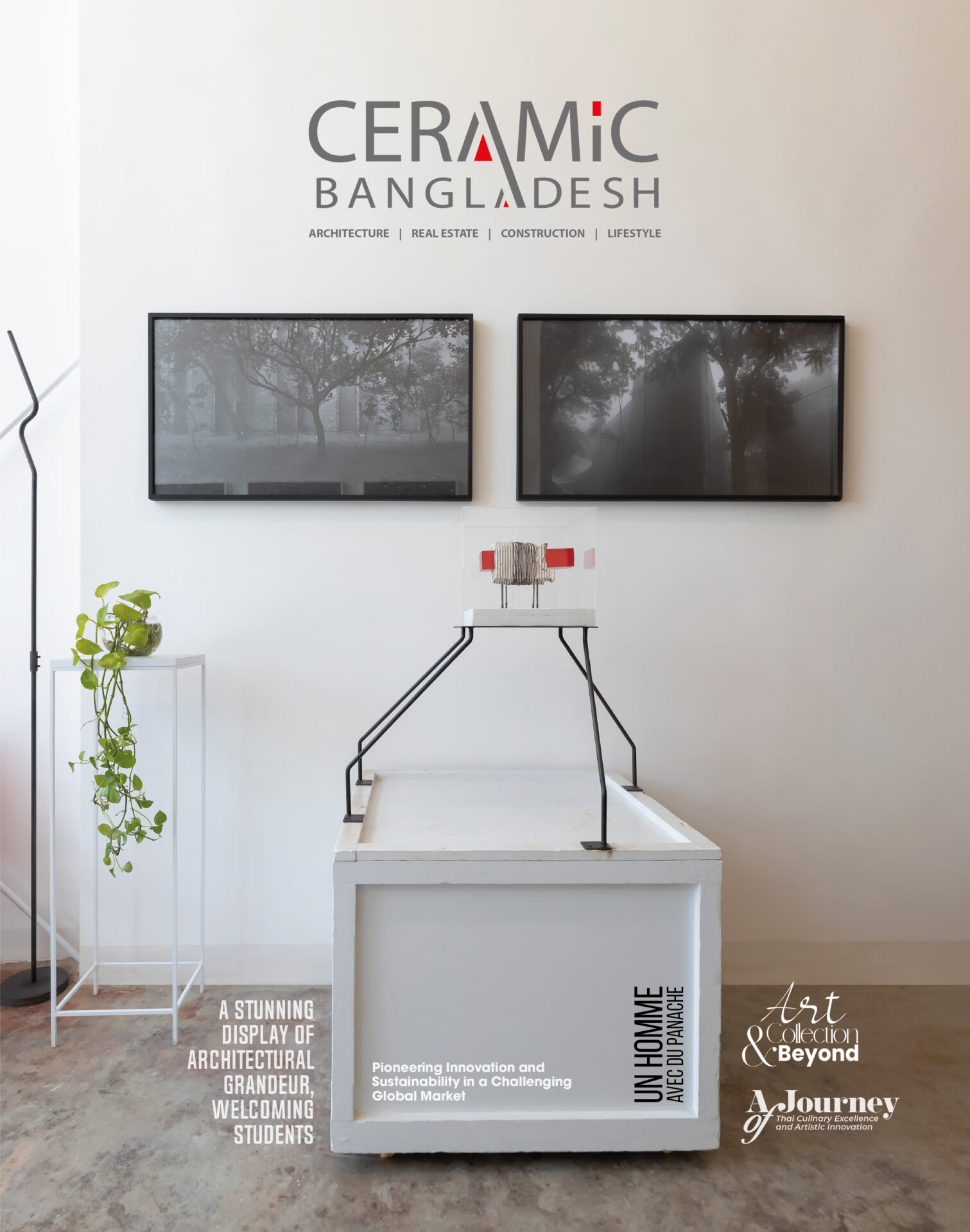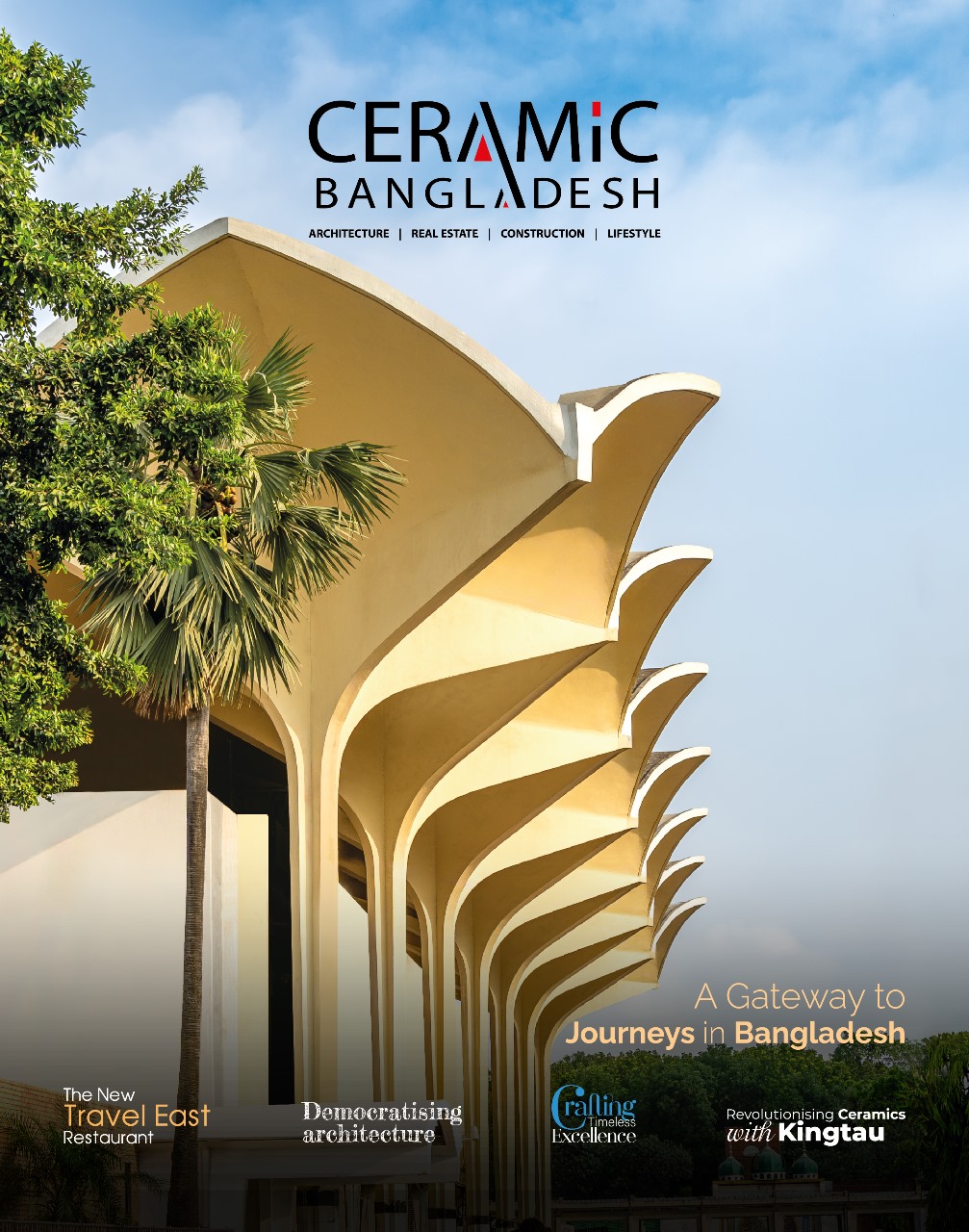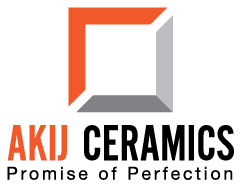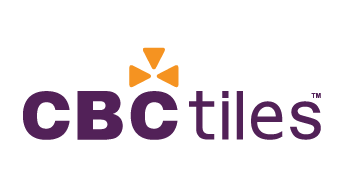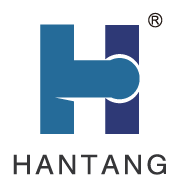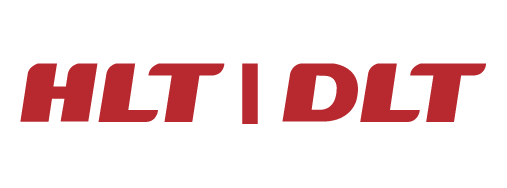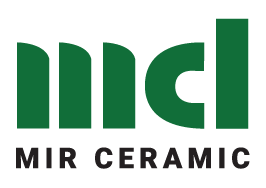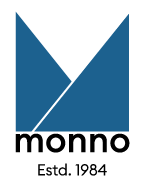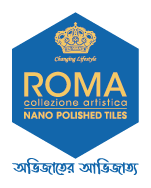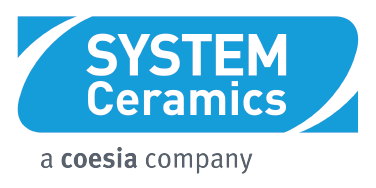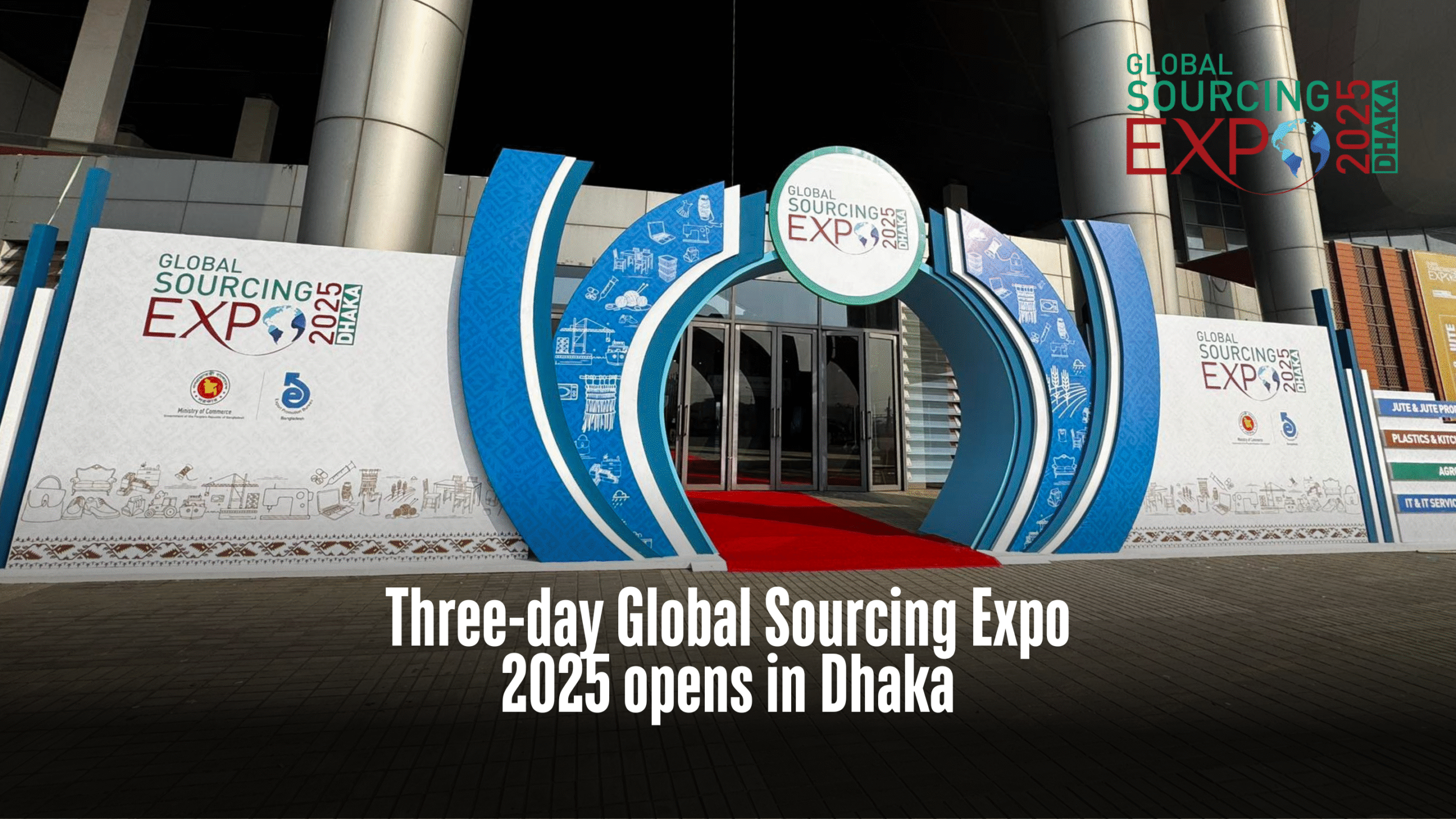
Three-day Global Sourcing Expo 2025 opens in Dhaka
The Global Sourcing Expo 2025 – Dhaka has opened at the Bangladesh-China Friendship Exhibition Centre in Purbachal, bringing together exporters, buyers and trade bodies from across the world in a major push to diversify Bangladesh’s export markets. Jointly organised by the Export Promotion Bureau (EPB) and the commerce ministry, the three-day event is being billed as a strategic international platform showcasing Bangladesh’s evolution from a global apparel powerhouse to a diversified export hub. The expo features products from eight major sectors: readymade garments, leather and leather goods, jute and jute products, agricultural goods, plastics and kitchenware, home décor and furniture, pharmaceuticals, and ICT. More than 100 firms are taking part, including multinational companies, wholesalers and supply-chain representatives. Buyers and sourcing organisations from Afghanistan, China, Iran, Japan, Myanmar, Pakistan, Singapore, Sri Lanka, Thailand, the UAE, the US and several other countries are attending business-to-business meetings and negotiating potential contracts. The fair houses 200 stalls and includes 12 thematic seminars, fashion shows, product demonstrations, and both online and offline networking sessions. Organisers say the event is designed to connect local businesses with global buyers, trade bodies and new market opportunities to accelerate export growth and diversification. Commerce Adviser Sk Bashir Uddin, who inaugurated the expo, said Bangladesh must accelerate diversification, strengthen competitiveness and adopt forward-looking trade policies as it prepares to graduate from the group of least developed countries (LDCs). “To navigate this transition successfully, we must accelerate diversification, improve competitiveness, and adopt forward-looking trade policies,” he said. He added that while graduation is a major achievement, it will gradually reduce the preferential market access and duty benefits Bangladesh currently enjoys. At a seminar on the sidelines of the expo, Mohammad Hatem, president of the Bangladesh Knitwear Manufacturers and Exporters Association, said foreign involvement in port operations could improve efficiency. He also called for suspension of the amended labour law until a newly elected government is in place, arguing that the current changes are neither industry- nor worker-friendly. In another session, Inamul Haq Khan, senior vice-president of the Bangladesh Garment Manufacturers and Exporters Association, stressed the need for easier access to green financing, greater support from brands through knowledge sharing and technology transfer, and targeted interventions for SMEs. He urged wider regional inclusion so that areas such as North Bengal, Sylhet and Chattogram can benefit alongside Dhaka-centric clusters. Khan also called on the government to amplify the industry’s success stories through Bangladesh’s embassies and high commissions abroad, showcasing achievements on the global stage. The expo is being positioned as a vital opportunity for companies aiming to expand exports, launch new product lines or strengthen global brand visibility. With strong government backing for trade and investment, it reflects Bangladesh’s push for product and market diversification at a time when the country is seeking to secure its place in global markets beyond garments. Speakers at the event included Lutfey Siddiqi, special envoy for international affairs to the chief adviser; Mohammad Hasan Arif, EPB vice chairman; Mahbubur Rahman, commerce secretary; and Md Abdur Rahim Khan, administrator of the Federation of Bangladesh Chambers of Commerce and Industry (FBCCI). Organisers say the expo is not only about showcasing products but also about building long-term partnerships. The inclusion of thematic seminars and networking sessions is intended to encourage dialogue on issues ranging from sustainable production and green financing to supply-chain resilience and regional inclusion. The event comes at a critical time for Bangladesh’s economy. As the country prepares for LDC graduation, policymakers and industry leaders are emphasising the need to diversify the export basket, strengthen supply-side capacity and forge new partnerships with international buyers. The expo, they argue, provides a platform to address these challenges while highlighting Bangladesh’s achievements and ambitions. By bringing together stakeholders from across the world, the Global Sourcing Expo 2025 – Dhaka underscores the country’s determination to move beyond its reliance on garments and establish itself as a competitive player in a wider range of industries. Written by Nibir Ayaan



